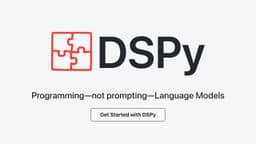Understanding DTI in Student Loans
Student loans can be essential for pursuing higher education, but they also impact financial health. A good understanding of key concepts, such as Debt-to-Income Ratio (DTI), is necessary.
What is DTI?
DTI stands for Debt-to-Income Ratio. It measures how much of a person's monthly income is used for debt repayments. This financial metric compares monthly debt payments to gross monthly income.
How is DTI calculated?
To calculate DTI, divide total monthly debt payments by gross monthly income. The result is expressed as a percentage. For example, if someone makes \$4,000 a month before taxes and pays \$1,200 toward debts, their DTI would be 30% (\$1,200 / \$4,000 = 0.30).
Why does DTI matter?
DTI is important for several reasons. It is often a significant factor when borrowing money. For example, mortgage lenders consider a borrower's DTI to determine loan affordability. Most lenders prefer a DTI lower than 36%, with no more than 28% allocated to housing costs.
For student loans, a high DTI can make it difficult to qualify for additional credit or loans. Loan servicers might also use DTI to determine eligibility for income-driven repayment plans. These plans can make student loans more manageable for some borrowers.
What can you do to improve your DTI?
Improving DTI involves either increasing income or reducing debt. Here are some effective strategies:
- Paying down debt: Making extra payments on student loans and credit cards can lower monthly debt obligations.
- Increasing income: Taking on a side job can provide additional monthly income, helping to reduce the DTI percentage.
- Refinancing debt: Refinancing loans can result in lower interest rates or better terms, which may decrease monthly payments.
- Avoid taking on new debt: Limiting new loans and credit card balances helps maintain a stable DTI.
Specifics for Student Loan DTI
Student loans are often significant debts but come with unique repayment options. Income-driven repayment plans can adjust monthly payments to a manageable percentage of income, which can improve DTI.
Loan forgiveness programs may also ease the debt burden over time. For instance, Public Service Loan Forgiveness (PSLF) can eliminate remaining debt after qualifying payments for those in public service jobs.
Longer-term implications
Managing DTI affects both current and future financial health. Monitoring DTI is crucial, as it influences ability to make larger purchases in the future. A favorable DTI can lead to better interest rates and loan terms, saving money over time.
Quick Tips for Students and Graduates
- Create a budget: This helps clarify cash flow and see how student loan payments fit in.
- Monitor your credit report: Errors on a credit report can negatively impact DTI evaluation by lenders.
- Live within your means: Staying within budget is key to improving DTI.
Wrapping it up
DTI is a vital measure in the context of student loans. It reflects financial health and plays a crucial role in managing education debt. Smart budgeting and proactive debt management can ensure DTI benefits financial options.
For assistance with student loans, accessing reliable sources like the U.S. Department of Education’s Federal Student Aid website (StudentAid.gov) can be beneficial. Managing your DTI effectively can help pave the way for a more secure financial future.












